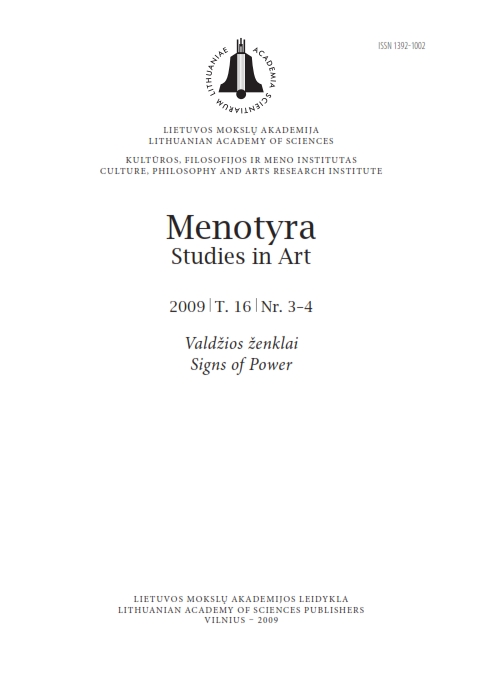Vilniaus vyskupo koadjutoriaus Juozapo Stanislovo Sapiegos (1708 −1754) dailės rinkinys: socialinio statuso ženklai
The art collection of the Vilnius coadjutor bishop Józef Stanisław Sapieha (1708−1754): representation of social status
Author(s): Aistė PaliušytėSubject(s): Visual Arts, 18th Century
Published by: Lietuvos mokslų akademijos leidykla
Keywords: Józef Stanisław Sapieha; collection; Baroque; 18th century; bishop; representation; portrait; devotional object;
Summary/Abstract: In the focus of the article is the art collection of the Vilnius coadjutor bishop Józef Stanisław Sapieha, with a particular emphasis on its representational nature. The basic sources of reference are the inventory of Sapieha’s posthumous property of 1754 held at the Manuscript Department of Vasyl Stefanyk Lviv National Scientific Library of Ukraine, correspondence and other sources. The collection is compared with the art collections of other eighteenthcentury collectors of the Grand Duchy of Lithuania, the hierarchs of the Catholic Church and the closest relatives of the Sapieha family. The proximity of the Sapieha collection to the collections of representatives of the social elite of the Grand Duchy of Lithuania in the 18th century is revealed. The collection contains numerous religious images, relics and other devotional objects, and its large part is comprised of examples of secular painting, mainly portraits, which represent their owner not only as a high ranking clergyman, but also as a member of a noble family. Landscapes and animalistic works, less common to earlier collections of clergymen, testify to the general changes of contents in the 18th century collections of the Grand Duchy of Lithuania and a change in the understanding of a valuable and prestigious collection gradually taking place in society. Rich and diverse in terms of genre, Sapieha’s collection is probably one of the most extraordinary in the history of clergymen of the Grand Duchy of Lithuania. Placed in the context of the earlier tradition of bishops’ collections, it reveals the taste of a clergyman of the late Baroque period and the increasingly secular character of his collection in the culture of the Grand Duchy of Lithuania at the dawn of the age of Enlightenment.
Journal: Menotyra
- Issue Year: 16/2009
- Issue No: 3-4
- Page Range: 100-116
- Page Count: 17
- Language: Lithuanian

